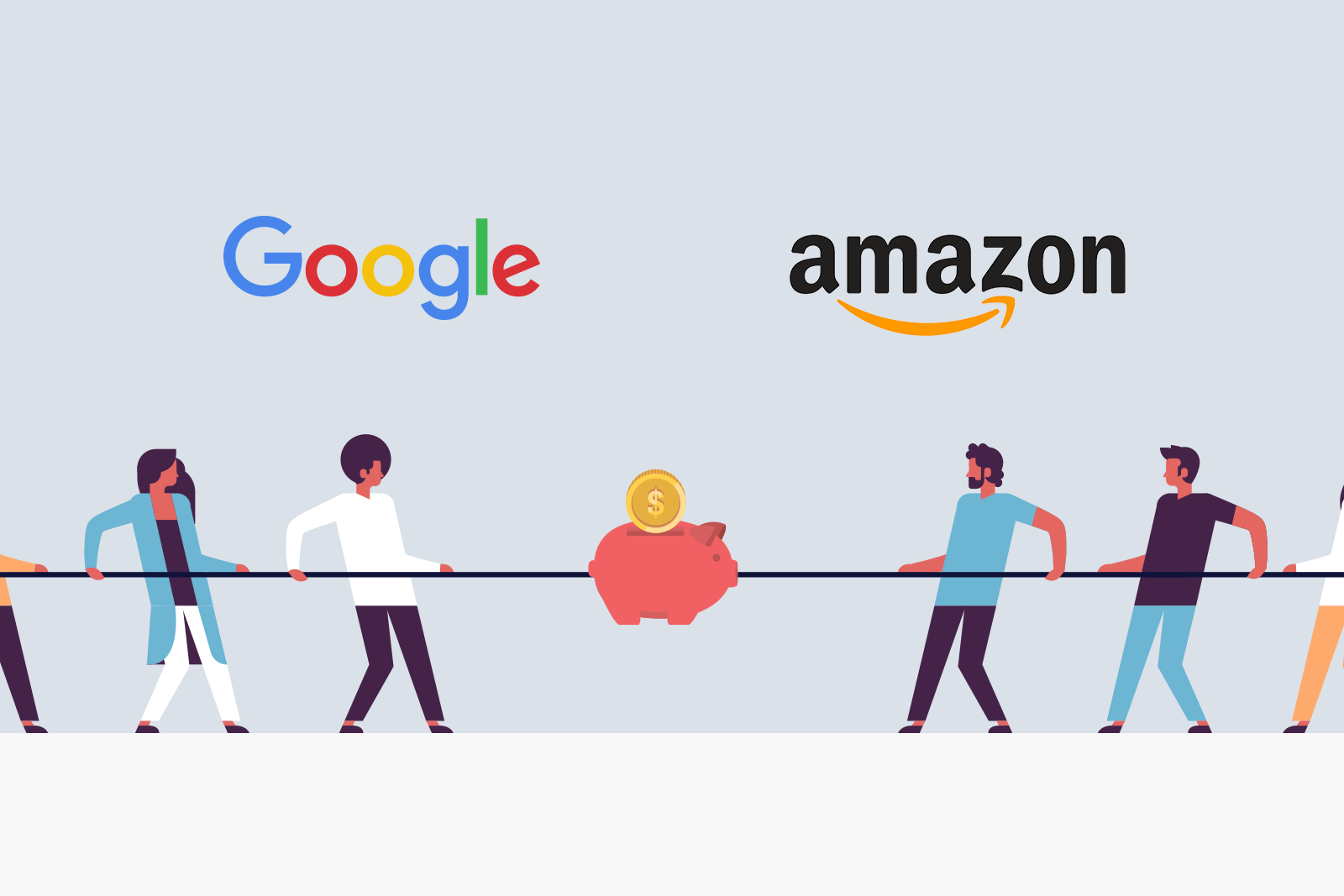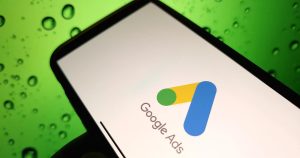
Google ads vs Amazon : The Evolving Landscape of Online Advertising Spend

Search marketing specialists and senior marketing executives have most likely been following the markets of big tech giants like Google ads, Amazon, and Facebook to see who is getting the biggest chunk of ad spend.
From start-ups to large-scale organizations, digital marketing is quickly becoming a priority to build relevance and a positive reputation online. For many, the first assumption is that search engine superpower Google and social media frontrunner Facebook have – and will continue – to own the ad spend majority with 60% of all digital ad spend revenue generated in 2017.
However, the digital retail service Amazon is quickly gaining speed, finally connecting e-commerce strategies and paid search investments. But why are they entering the digital ad world now, and how are they gaining traction so quickly in a challenging and competitive landscape?
The Digital Ad Revolution: Why Online Marketing Reigns Supreme
The digital advertising landscape is undergoing a seismic shift. By 2021, it’s projected that website and mobile advertising will capture a staggering half of all U.S. ad spend, surpassing the combined budgets of TV, radio, newspapers, and billboards. This surge underscores the dominance of digital marketing, and within this realm, paid advertising has been a cornerstone strategy for years.
Google’s Early Reign:
For a significant period, Google reigned supreme as the go-to platform for paid online advertising. With a whopping $35 billion invested in the U.S. alone, Google offered businesses an effective way to reach customers actively searching for relevant terms. This targeted approach allowed companies to attract qualified leads, avoiding the pitfalls of a broad-net strategy.
The Rise of Social Media Advertising:
However, the past two decades have witnessed the explosive growth of social media, and with it, a diversification of paid advertising platforms. Facebook, for example, now offers a robust advertising suite, featuring options like sidebar placements and promoted posts. This empowers businesses to connect with potential customers on a more dynamic and interactive platform.
The Evolving Future:
The digital advertising landscape continues to evolve. While Google and established social media platforms remain prominent, new players and innovative formats are constantly emerging. This necessitates a flexible and data-driven approach from marketers to maximize campaign effectiveness and reach target audiences across the ever-expanding digital advertising ecosystem.

The Shifting Sands of Ad Spend: A New Era Dawns
For years, Google and Facebook formed an unbreakable duopoly in the ad spend arena, particularly in the U.K. and U.S. They collectively captured a staggering 70% of the U.K. ad spend market, seemingly unchallenged for years to come. However, recent trends indicate a shift in the landscape, with their U.S. market share showing signs of decline. Two key players – Amazon and Snapchat – are emerging as potential disrupters.
Monetizing the Mobile Revolution:
A significant factor in the rise and dominance of Google and Facebook was their ability to adapt and thrive in the mobile world. As online behavior shifted from desktops to smartphones and tablets, both companies developed successful strategies to monetize these smaller screens.
Google’s Lucrative AdWords: At the forefront of Google’s dominance is its flagship product: AdWords. The seamless integration of ads within search results, sometimes blurring the lines with organic results, has led to a significant increase in clicks. Paid clicks on Google Ads have surged a remarkable 52% year-over-year, the highest climb in seven years.
Facebook’s Newsfeed Monetization: While initially facing challenges in monetizing mobile users, Facebook’s strategic integration of ads within the user’s newsfeed led to a revenue explosion. Furthermore, the widespread popularity of both companies’ mobile apps solidifies their position as powerful advertising platforms.
Mobile & App Dominance, But a New Challenger Emerges
Their dominance in mobile and the app market makes Google and Facebook formidable forces – yet, Amazon is no longer a silent observer. Leveraging its brand recognition and influence, Amazon is poised to become a serious contender in the ad spend race.
Google Ads vs Amazon Ads: A Tale of Two Titans
While both Google Ads and Amazon Ads are dominant players in the online advertising landscape, they cater to distinct marketing needs with key differences in approach:
Target Audience Reach: Google Ads boasts a wider reach, allowing you to advertise to users actively searching for products or services across the web. This approach drives traffic to your external website.
Internal Ecosystem: Amazon Ads operate within a closed loop. All advertised products are sold on Amazon itself, ensuring clicks generate revenue for both Amazon and the seller.
Ad Targeting: Google Ads rely heavily on click-through rate (CTR) to rank ad visibility. Amazon, however, prioritizes total profit generated from an ad, potentially favoring established sellers with higher margins.
Ad Investment: Certain ad formats on Amazon, like headline ads, require a minimum spend, potentially limiting participation for smaller sellers.
Data Privacy: Amazon takes a different approach to data privacy. While Google gathers and utilizes user behavior data for ad targeting, Amazon does not actively retarget based on past actions.
In this article, we discussed the function and importance of SEO in the digital world. If you are interested, you can learn more about digital marketing and Google advertising by viewing other articles on the Kayoads website.

Website desgin
Using our website design and development service with KayoAds

Android & IOS
Broaden your business horizons with top-notch mobile app development services

SEO Tools
At Kayoads, we specialize in delivering top-notch SEO optimize services




